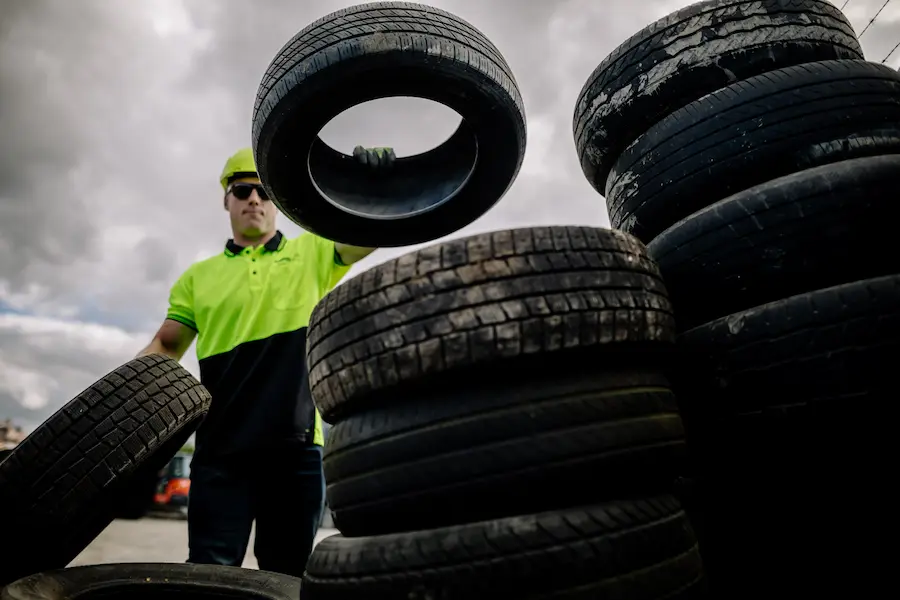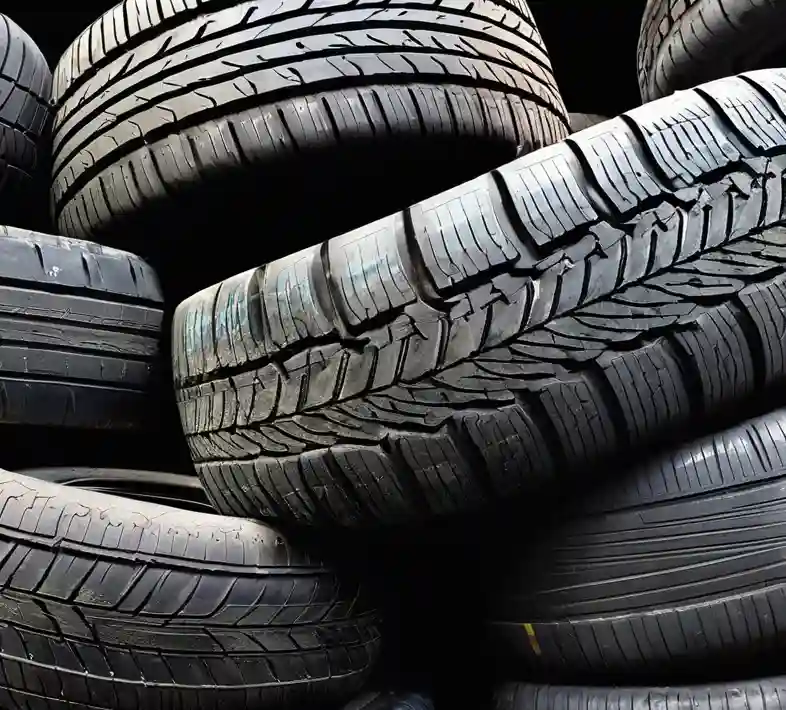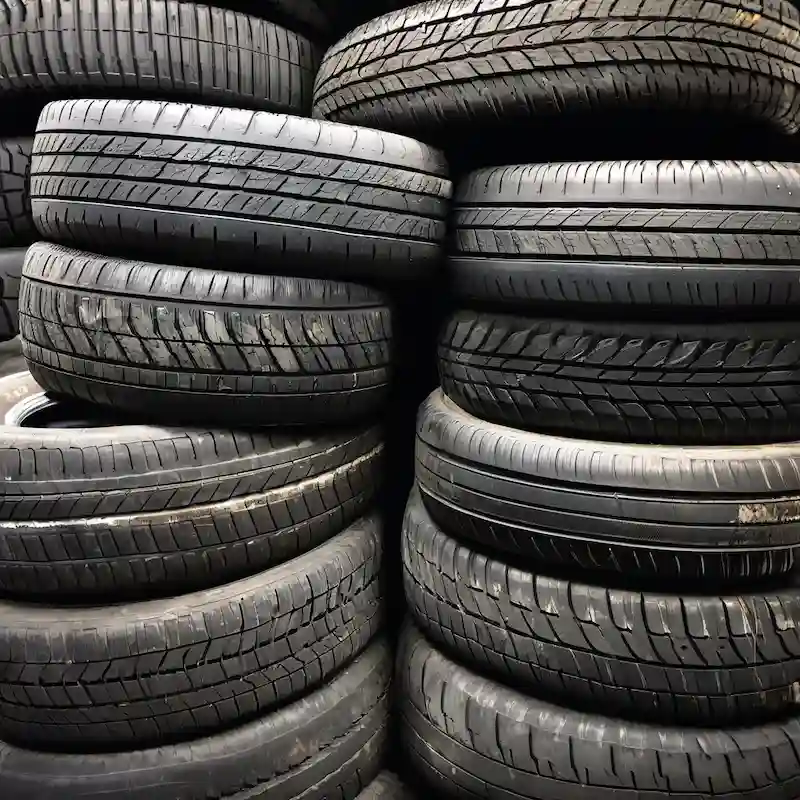How to get rid of old tyres and the important to recycle them
Today we will focus on – getting rid of old tyres !
If you’ve got old tyres—car, truck, light truck, solid rubber, motorcycle, bicycle, or even commercial vehicle tyres—Purpose Fill is your go-to solution. We take them all, no matter the condition, size, or brand. Whether you’re an individual with a few used tyres or a tyre dealer with a mountain of discarded rubber, we’re here to help you get rid of old tyres the right way.
And recycling old tyres is crucial for both environmental sustainability and community health.
As a leading waste removal company, Purpose Fill is dedicated to providing effective solutions for managing and disposing of waste responsibly. In this post, we’ll explore the importance of recycling old tyres, the environmental impact, and how you can effectively recycle them using Purpose Fill’s services.

The environmental impact of old tyres
Old tyres pose a significant environmental challenge. Each year, millions of tyres are discarded, leading to various problems:
- Landfill Overload: Tyres take up substantial space and can remain in landfills for hundreds of years.
- Fire Hazards: Piled tyres are prone to catching fire, releasing toxic smoke and pollutants that can affect air quality.
- Breeding Grounds for Pests: Stagnant water collects in tyres, creating ideal breeding conditions for mosquitoes and other pests.
- Toxic Leachates: Tyres contain harmful chemicals that can leach into the soil and groundwater, contaminating local water supplies and harming ecosystems.
- Habitat Destruction: Discarded tyres can disrupt local habitats, particularly in natural areas where they accumulate and alter the landscape, affecting wildlife.
- Resource Depletion: The production of new tyres requires significant natural resources, including rubber, oil, and carbon black; recycling helps conserve these valuable materials.
Why recycling old tyres matters
Recycling old tyres isn’t just smart; it’s essential! Here’s why you should care:
- Resource Conservation: Those old tyres can be reborn as rubber mulch, asphalt, or even playground surfaces. Talk about a second chance!
- Reduced Pollution: When you recycle instead of tossing them, you prevent nasty chemicals from leaching into our precious soil and water. Mother Nature thanks you!
- Energy Recovery: Believe it or not, tyres can power energy generation processes. Who knew your old rubber could help keep the lights on?
- Job Creation: Tyre recycling isn’t just good for the planet; it creates jobs in the recycling industry. It’s a win-win—save the Earth and boost the economy!
- Sustainable Future: Every tyres recycled contributes to a greener planet. You’re not just recycling; you’re investing in a sustainable future for generations to come.
- Community Safety: Disposing of old tyres properly reduces fire hazards and pest breeding grounds. Keep your community safe and sound—recycle those tyres!
How to recycle old tyres
Recycling old tyres might sound like a chore, but fear not! With a sprinkle of humor and the right steps, it’s easier than you think. Here’s your fun guide to tyre recycling:
1. Assessing your old tyres
First things first: take a good look at those tyres. Here’s what to consider:
- Usability: Are they still roadworthy, or have they seen better days? If they’re looking more like Swiss cheese than a tyre, recycling is definitely the way to go.
- Quantity: Got a tyre graveyard in your backyard? Count ’em up! Knowing how many you have will help you figure out the best way to get rid of them.
- Type of tyre : Different tyre have different recycling needs. Make a note—car tyres, truck tyres, or the mysterious solid rubber variety!
- Age: How long have they been sitting around? Tyres older than your last haircut might need to hit the recycling center pronto!
- Condition: Check for cracks, bulges, or strange smells. If it smells like a tyre fire waiting to happen, it’s time to recycle!
2. Finding a recycling center
Time to hunt down a recycling center that accepts tyres. Many places are tyre-friendly, so check out:
- Local Waste Management Authorities: They’re like tyre matchmakers, connecting you with recycling programs.
- Retailers: Many tyre shops will take your old tyres when you buy new ones. It’s like a trade-in, but for rubber!
- Community Events: Some neighborhoods host tyre recycling days. Keep an eye out—it’s like a party for your old rubber!
- Online Directories: Use the internet (yes, the magical place) to find nearby recycling centers. Just type “tyre recycling near me,” and voilà!
- Friends & Family: Ask around! Someone might know a hidden gem that takes tyres. It’s all about community!
3. Using Purpose Fill’s flexible skip bag to get rid of tyres
For an easy-peasy solution, check out Purpose Fill. Our Purpose Bag is the superhero you didn’t know you needed for collecting and removing those old tyres. Here’s the scoop:
- Order a Purpose Bag: Get Purpose Bag delivered to your door step, Its a flexible skip bag ideal for this kind of jobs is tough and can get up to 750kg easy!
- Fill the Bag: Toss in your old tyres and any other waste. It’s like a giant rubbery bag of goodies! The Purpose Bag is like a Mary Poppins bag for your junk – it holds way more than you’d think.
- Alternatively if you have lots of general waste you can order a skip bin ( some of them are bigger then the skip bag and great for heavier loads )
- Schedule Pickup: When your bag is full, just schedule a pickup with Purpose Fill. We’ll swoop in and handle everything, making sure your tyres are recycled responsibly,
- Track Your Impact: Once your tyres are recycled, ask how they’re being repurposed. It’s like following your old tyres on their new adventure!
- Spread the Word: Tell your friends about Purpose Fill! Everyone deserves an easy way to recycle—let’s make it a movement!
Benefits of using Purpose Fill

- Myth: All recycling centers accept tyres .
- Fact: Not all centers accept tyres ; it’s essential to check with local facilities.
- Myth: Tyres can be reused indefinitely.
- Fact: tyres have a limited lifespan and should be inspected regularly for safety.
- Myth: Recycling tyres requires specialized knowledge.
- Fact: Many recycling programs offer straightforward instructions for proper disposal.
- Myth: Old tyres just pile up in landfills if recycled.
- Fact: Recycled tyres are processed into new materials or products, preventing landfill waste.
- Myth: Tyre recycling is only for businesses.
- Fact: Individuals can also recycle tyres ; many programs cater to residential needs.
- Myth: Tyres can be safely buried in the ground.
- Fact: Burying tyres can lead to environmental contamination and is illegal in many places.
- Myth: All tyre recycling methods are environmentally friendly.
- Fact: Some methods can produce harmful emissions; it’s essential to choose certified facilities.
- Myth: Recycling tyres is a new trend.
- Fact: Tyre recycling has been practiced for decades and is a well-established industry.
- Myth: It’s cheaper to throw tyres away than recycle them.
- Fact: The long-term costs of pollution and health risks often outweigh recycling fees.
- Myth: Recycling tyres doesn’t have any positive impact.
- Fact: Tyre recycling conserves resources and reduces pollution, benefiting the environment and economy.
The process of tyre recycling
Understanding what happens to your old tyres after you toss them might sound as exciting as watching paint dry, but stick with me! It’s a fascinating process that’s good for the planet—and it has a few laughs along the way.
1. Collection and Transportation
First up, we gather those old tyres like they’re the hottest new trend—because they should be! Here’s how it goes:
- The Heroic Pickup: Our crew shows up like the Avengers for tyres. We load your Purpose Bag into our trusty truck— we check that no tyres left behind! make sure everything is well packed and using the space to the maximum ( It’s like a game of Tetris, but with more rubber and less skill.)
- Landfill No-Go: This step is crucial. We’re on a mission to keep tyres from becoming landfill squatters. Let’s be honest, they look terrible in a garden—no one wants a rubbery eyesore!
- Your Role: Congrats you’re not just a recycler; you’re a tyre-saver! You’ve just earned a badge in the recycling hall of fame. Wear it with pride, mate! You’re basically a superhero in a high-viz vest.
2. Shredding
Next up: the shredding extravaganza! At the recycling facility, those tyres meet their fate in a giant shredder. Here’s the scoop:
- Chop, Chop!: The shredder roars to life—it’s like a rock concert in there. Imagine the tyres screaming, “Not the shredder!” but they’re really just getting a new lease on life. It’s the ultimate plot twist!
- Rubber Confetti: Once shredded, we’ve got tiny bits of rubber flying around—think of it as a tyre party where everyone’s invited! It’s like a rugby match, but with fewer injuries and more fun.
- Separation Central: This process also makes it easier to separate the various materials lurking inside those tyres —like rubber, steel, and fabric. It’s a bit like a game of “where’s Wally?” but with rubber! Spoiler: Wally’s always hiding in the tread.
3. Material separation
Now it’s time for the real magic—separating the treasures from the trash! The shredded material undergoes some fancy processes to extract valuable components, including:
- Rubber: This isn’t just any rubber; it’s the star of the show! Used for playground surfaces, sports fields, and running tracks. Your old tyres could be helping kids leap like they’re training for the Olympics—talk about a glow-up!
- Steel: That hidden metal treasure? It’s recycled into new steel products. Think of it as a tyre’s second career. Maybe it’ll even become part of a new BBQ! “Hey, mate, that’s a tyre you’re grilling on!”
- Fabric: Often used in insulation or composite materials, this fabric gets a cozy retirement. It’s like a warm blanket for your home—because who doesn’t love a good snuggle? Just don’t let the cat mistake it for a scratching post!
4. Reuse and repurpose
And now, the grand finale! This is where those extracted materials get a whole new life in various applications, including:
- Rubber Mulch: Perfect for landscaping and erosion control. Your garden could look fabulous, and you can say it’s made from recycled tyres—talk about eco-chic! “Look at me, saving the planet while gardening!”
- Asphalt: Rubberized asphalt improves road durability and performance. It’s like giving our roads a spa day—smooth, sleek, and ready to take on the traffic of Auckland! “You’ll glide over those potholes like a hot knife through butter!”
- Fuel: Yes, you heard right! Tyres can be converted into fuel for energy production. It’s like those tyres are saying, “I’m not done yet; let’s power the world!” Talk about turning a rubbery past into an energy-filled future! “Charge up, world, here we come!”
- Playground Paradise: Those tiny rubber bits can be transformed into safe, cushy surfaces for playgrounds. Kids can bounce around like they’re in a musical—“Jumping on recycled dreams!”
- Eco-Friendly Pavers: Recycled rubber can be used to create stylish pavers for walkways. It’s like giving your garden paths a makeover—“Welcome to the eco-chic runway!”
- Energy Magic: Some of the rubber can even be converted into energy for homes. It’s like the tyres are saying, “Let’s light up the night!”—turning old rides into bright vibes!

Purpose Fill: your top-rated Waikato team
We’re the best darn team in the Waikato ( five star 605+ google reviews ) ) and we’re always happy to help you out.
If you have any questions, just give us a call at 0800 50 10 20 or shoot us an email. We’re here for you!
